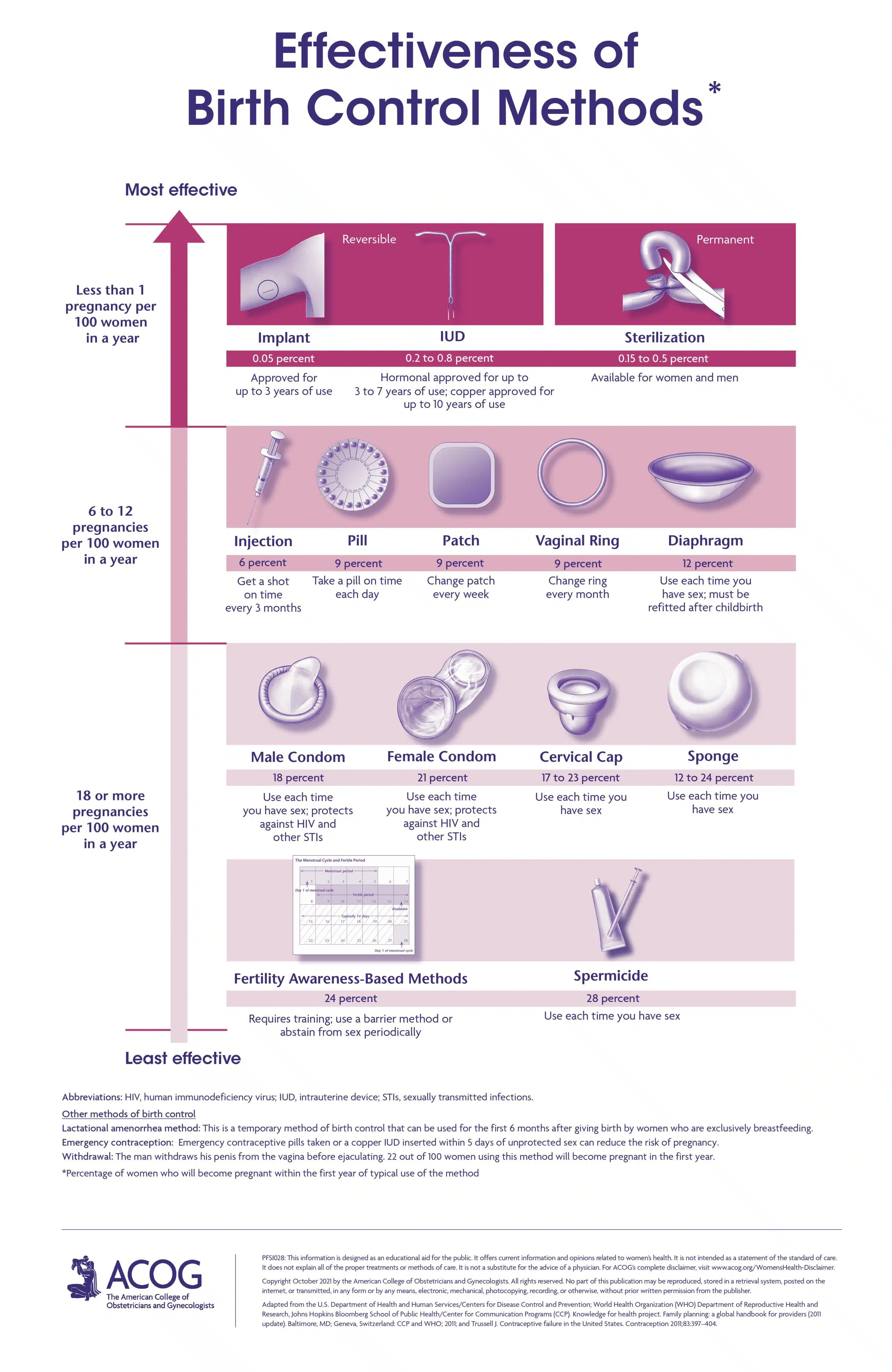Contraception Decision-Making
Birth Control: It’s Your Choice, Make it Safe.
CONTRACEPTION CONSIDERATIONS: IT'S ALL ABOUT YOU
Birth control is a very personal and intimate decision. The different factors that go into making a decision about birth control involve more than just the prevention of pregnancy. These factors can include, among others, relationship status, lifestyle preferences or demands, and personal health history.
Many options to prevent pregnancy exist, but no one option is considered the “best” method for all women. The factors that influence a woman’s contraception decision-making are diverse, and no two women are alike.
There are, however, several key factors that all women considering their contraception options should consider. These factors include: making a choice that meets your specific needs, evaluating your short- and long-term pregnancy plans, doing your own research, comparing hormonal and non-hormonal contraception options, and communicating with your healthcare provider or prescriber to make the best choice given your health history.

MAKE A DECISION THAT IS RIGHT FOR YOU
A decision about birth control is personal and should meet your specific needs. You should never feel pressured by partners, friends, family, or your healthcare provider to choose a form of birth control that you are not comfortable using. Instead, take ownership of your decision. Make sure that your healthcare provider is aware of your personal preferences, potential concerns, and questions.
SHORT OR LONG TERM PREGNANCY PLANS
Do you plan to get pregnant soon or in a few years? If you plan to get pregnant in a year or two, you might want to focus on short-acting birth control options like the pill. If you don’t plan to get pregnant soon or in the future, you may want to consider long-acting methods of contraception, such as an intrauterine device (IUD). Different methods of birth control can meet your needs at different times in your life.
GET ALL THE INFORMATION YOU NEED TO KNOW
There are many contraception options to consider. This can make the selection process challenging. For example, there are a wide variety of birth control pills available Each option can have some different combination of hormones or different amounts of each hormone. There also are long-acting forms of contraception that are implanted in the body – such as IUDs and implants that are inserted under the skin.
The best method of birth control a woman can choose is one that she knows is safe, that she is comfortable using, and that she can use consistently and correctly.
A woman’s preferred method of birth control may change during her life, making contraception a choice that should be evaluated over time to make sure it meets her changing needs.
COMPARE HORMONAL VERSUS NON-HORMONAL CONTRACEPTION OPTIONS
Birth control methods that contain hormones – including the pill, patch, and ring – have been used safely for many years by millions of women worldwide. Estrogen and synthetic progesterone (called progestin) are the hormones commonly used in many forms of birth control. Estrogen-based contraception methods are associated with an increased risk for cardiovascular disease, including an increased risk for dangerous blood clots, heart attack, and stroke.
All too often, we hear stories of unsuspecting and otherwise healthy women of child-bearing age who are prescribed birth control that contains estrogen and who later experience a blood clot or lose their life to a blood clot. Tragically, hundreds of women in the United States lose their life due to hormonal contraception each year.1
RATE OF RISK
According to the U.S. Food & Drug Administration, the risk for blood clots is about three to nine women out of 10,000 every year.2 While the risk for blood clots linked to hormonal contraception is characterized as “rare,” even statistically small risks can affect a significant number of people because hormonal contraception is so widely used. For example, there are an estimated 842 million women worldwide who use hormonal contraception (all methods).3 Therefore, based on various estimations, about 250,000 to more than 750,000 women worldwide may be at increased risk for blood clots linked to their birth control.
Also, women with other risk factors, such as women who are obese, who smoke, or who may have a genetic clotting disorder, are at even greater risk.4 For example, the risk for dangerous blood clots is 35 times greater for women who use hormonal contraception and who also are affected by the inherited clotting disorder factor V Leiden.5
Speak to your healthcare provider or prescriber to evaluate your potential risk for blood clots. You can use this Self-Screener Questionnaire to help identify your risk for blood clots.
COMMUNICATION
When considering your contraception options, it’s important to talk to your healthcare provider or prescriber about your full medical history. The hormones in birth control can pose health risks for people with particular medical conditions. For example, contraceptive methods that contain estrogen can be dangerous for people who smoke, have medical conditions like heart disease, severe diabetes, breast cancer, severe hypertension, or a personal or a family history of clotting. Read more about hormonal versus non-hormonal contraception here.
- Hormonal contraceptive pills carry a three- to nine-fold risk of blood clots compared to non-users.6
- Hormonal vaginal rings and transdermal patches carry a six- to eight-fold risk for blood clots compared to nonusers.7
- Being overweight or obese (BMI >30) can double a person’s risk for a blood clot compared to normal weight.8
Learn
There are many risk factors for blood clots, including the use of estrogen-based contraception. Are you at risk?Recognize Risk
The best way to prevent blood clots is to recogize your risk. If you are considering your birth control options, learn more about the continuum of blood clot risks that women face throughout their lifetime.
Research
There are both hormonal and non-hormonal contraception options available. Which option might be best for you?Get the Facts
Get all of the information you need about your contraception options and talk to your healthcare provider about your health history. Make sure you make a fully informed decision that meets your specific birth control needs.
Download
A spectrum of short-acting and long-acting birth control methods are available. Are you familiar with all of your options?Weigh all Options
Birth control pills and condoms are just two of many options you have for birth control. View and download a chart showing the effectiveness of each option available and discuss your options with your healthcare provider.

BE YOUR OWN BEST ADVOCATE
- Do you plan to get pregnant in a few years, a few months, or sooner?
- How frequently do you have sex and how many partners do you have?
- Is each method of contraception you are considering effective?
- What is the safety profile for each option you are considering and what risks do they pose?
- Do you have religious or cultural beliefs that need to be factored into your decision?
- Is the method you might choose convenient and affordable?
- Do you have any health issues that might make some options unsafe for you?
CONTRACEPTION OPTIONS
The chart below, from The American College of Obstetricians and Gynecologists, provides information to help women review the range of available birth control options, and demonstrates the rates of effectiveness among these different contraception methods.

Learn more about the Rowan Foundation: Our Work

